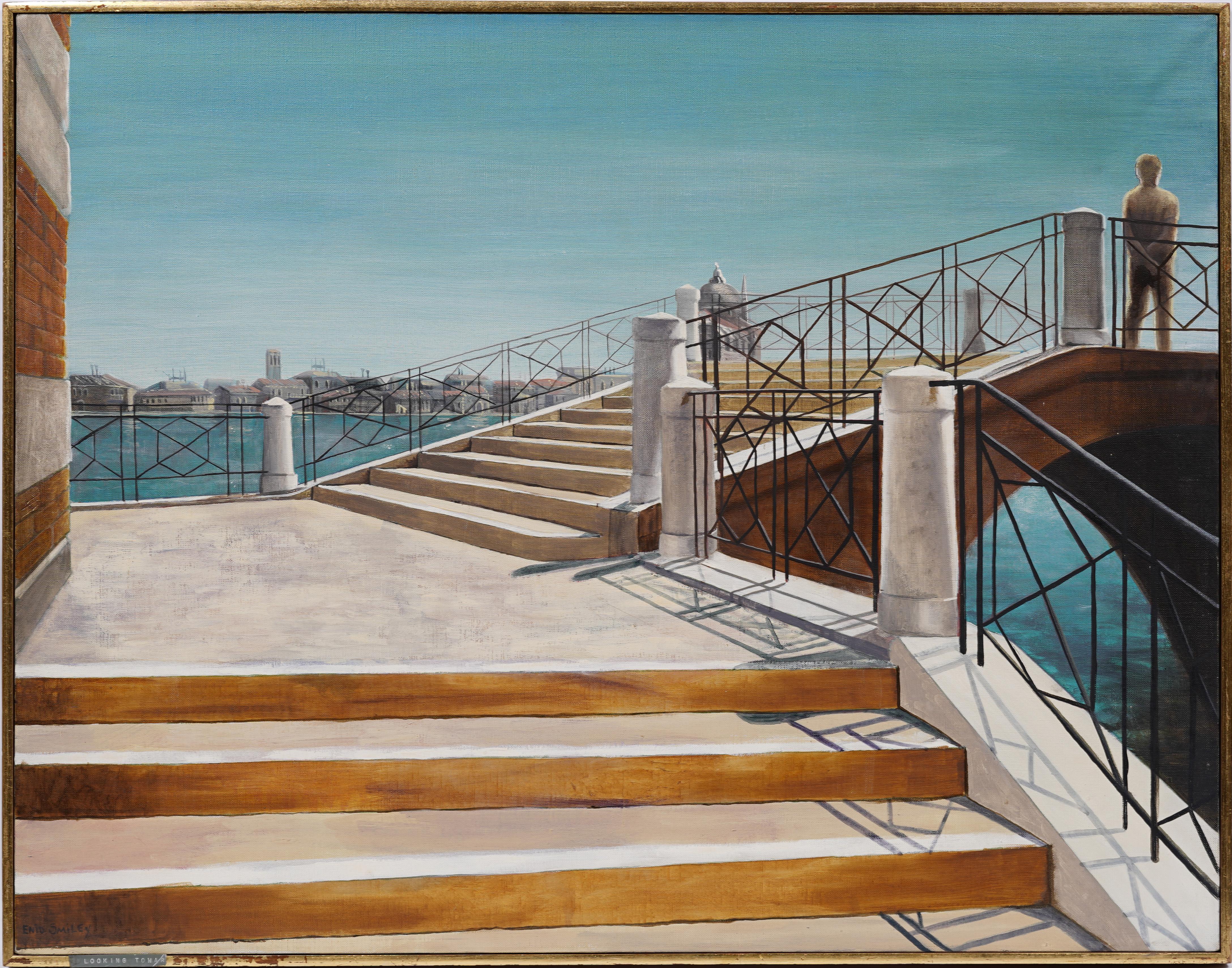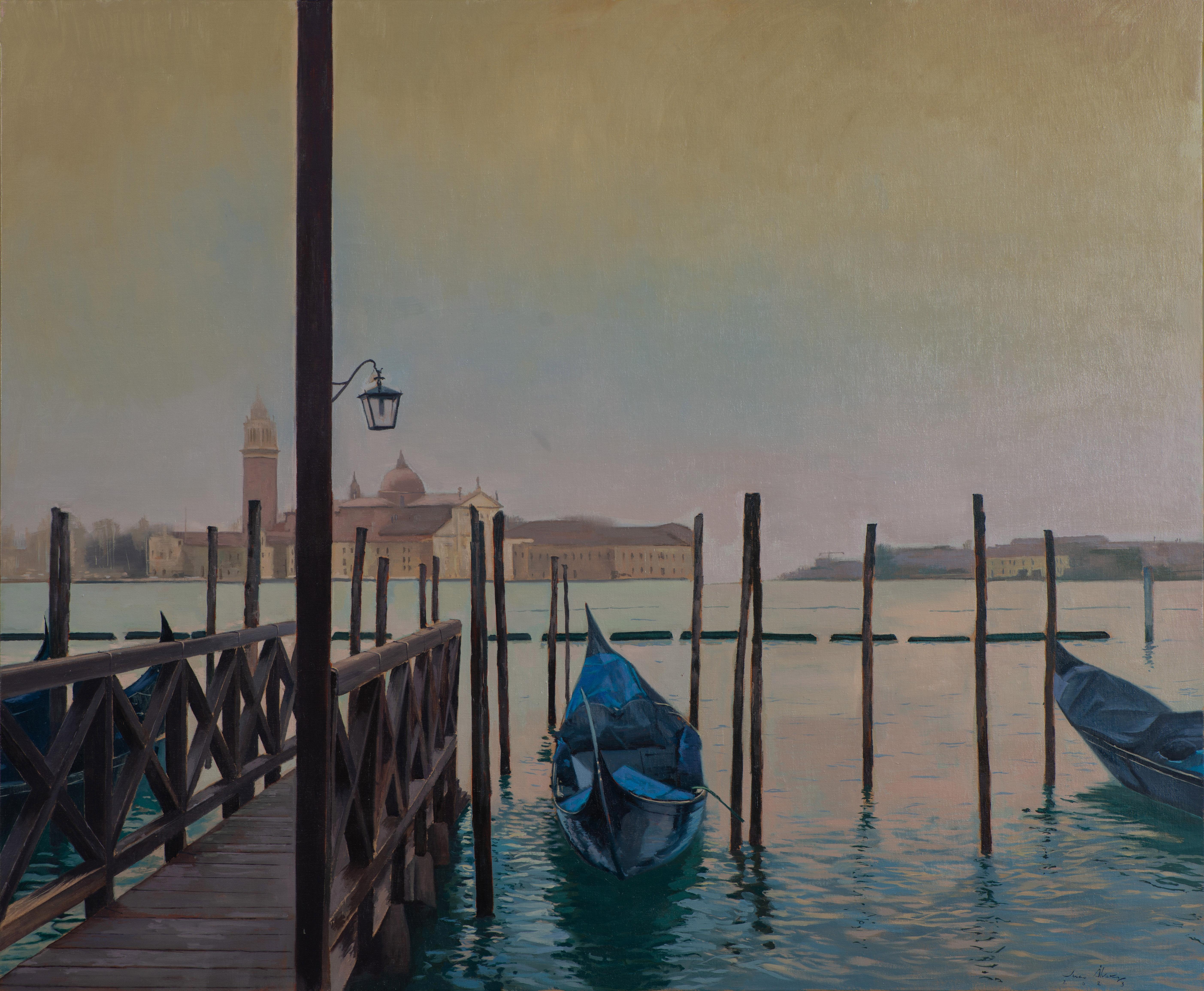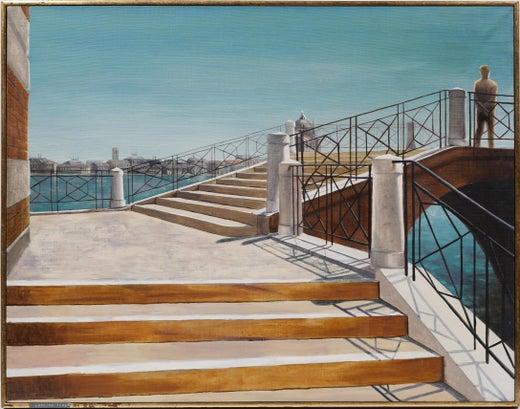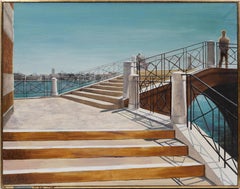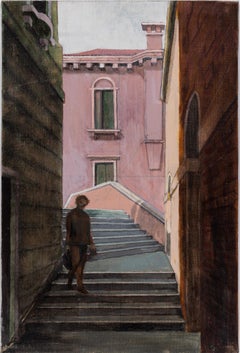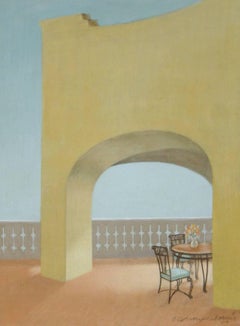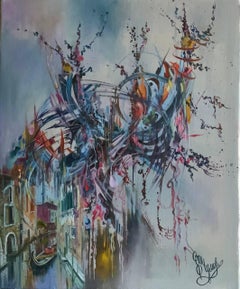Enid SmileyA Day in Venice1970
1970
About the Item
- Creator:Enid Smiley (1921 - 2004, American)
- Creation Year:1970
- Dimensions:Height: 30 in (76.2 cm)Width: 36 in (91.44 cm)
- Medium:
- Movement & Style:
- Period:
- Condition:
- Gallery Location:Buffalo, NY
- Reference Number:1stDibs: LU13922453723
Enid Smiley
Enid Smiley born as Enid Ginsberg and later the family name changed to Gilbert. Attended Yale University and found herself designing costumes for plays and operas. In the late 1930s, Smiley approached Macy's, Bloomingdales and other famous New York retailers soliciting her artistic talents. Began visiting Venice Italy in the 1940s. Schooled with Guido Cadorin in Venice and Raphael Soyer in New York. Smiley and her husband became best friends with John and Dora Koch. They are noted in John’s famous painting Cocktail Party. The two couples frequented each other home for dinner gatherings of other famous artists and professionals. Smiley secured a studio overlooking Central Park for several decades. Her artistic style and subjects reflect her natural affection to be alone in her studio and her life. John Koch was instrumental in motivating Smiley over the years to continue to hone her painting skills. Smiley was hesitant throughout her life to exhibit her work. John Koch over years occasionally dropped by Smiley's studio to purchase her oil paintings for his own collection. Levy Galleries in Manhattan consigned several of Smiley's still life oil paintings during the 1960s and had success. A quote from Smiley's journal "I hate painting these still lifes but this is what they buy.” Smiley's artistic talent was rewarded in 1962. Hirschl & Adler Galleries appointed John Koch to select a group of paintings and sculptures for an exhibition titled "The Continuing Tradition of Realism in American Art". Smiley's #81 White Dawn graced the walls of the gallery along with American Masters like Edward Hopper and Andrew Wyeth.
- ShippingRetrieving quote...Shipping from: Buffalo, NY
- Return Policy
More From This Seller
View All1950s Modern Landscape Paintings
Canvas, Oil
1950s Modern Landscape Paintings
Canvas, Oil
21st Century and Contemporary Realist Landscape Paintings
Board, Egg Tempera
1950s Modern Figurative Paintings
Board, Egg Tempera
1940s American Modern Abstract Paintings
Canvas, Oil
21st Century and Contemporary Contemporary Figurative Paintings
Linen, Oil
You May Also Like
2010s Neo-Expressionist Landscape Paintings
Canvas, Oil
21st Century and Contemporary Landscape Paintings
Oil
2010s Impressionist Paintings
Canvas, Oil
2010s American Realist Landscape Paintings
Oil, Wood Panel
21st Century and Contemporary Realist Landscape Paintings
Oil, Linen
20th Century Paintings
Oil
